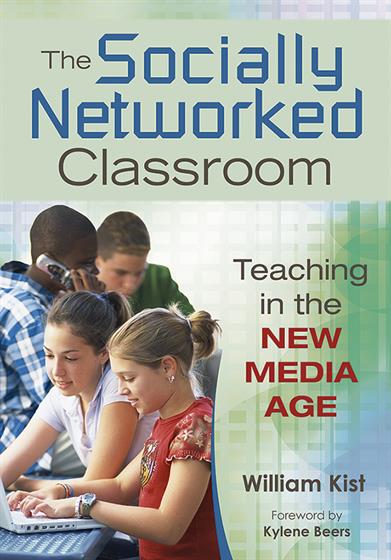Description
"Kist writes as a learner should, sharing what he discovers along the way. I like even more that he asks important questions while capturing how he and several other master teachers have attempted to ask and answer them with their own students. You will, too."
—Bud Hunt, Blogger at Bud the Teacher
Instructional Technologist, St. Vrain Valley School District, Longmont, CO
"The innovative classroom activities in this engaging book will inspire teachers to help students acquire digital-media literacies for collaborating on and sharing their work—literacies essential for participation in a networked world."
—Richard Beach, Professor of English Education
University of Minnesota
"A veritable smorgasbord of ideas and suggestions. This text grabbed me right away, and I started flagging all sorts of ideas even in the earliest chapters. It is as if Bill Kist met me in the hallway, took me by the hand, and simply said, 'Come here, I want to show you something.'"
—Sheila M. Gragg, Technology Integration Coach
Ashbury College, Canada
Incorporate social networking into instruction, no matter your level of technological expertise or Internet access!
Web sites like Facebook and Twitter have transformed the way young people interact and communicate. With appropriate guidelines, students' social networking skills can be harnessed to develop new literacies and deepen teaching and learning in the 21st century.
The Socially Networked Classroom demonstrates how pioneering teachers have successfully integrated screen-based literacies into their instruction. This book includes:
- Real-world activities and lesson examples with assignment sheets, assessments, and rubrics
- Ideas on fostering collaborative learning using blogs, wikis, nings, and other interactive media.
- Tips on Internet safety, blogging etiquette, protected blogging sites, and more
- Blog entries from classroom teachers
With this accessible guide for Grades 5–12, teachers of all levels of technological expertise can help students develop the new literacies necessary to succeed in a digital world.
Key features
- Identifies and documents the processes of teaching and learning in pioneering new media classrooms featuring social networking
- Documents the assignments, assessments, and outcomes of instruction in these classrooms
- Explores a broadened definition of literacy in relation to human learning and education
- Brings nationally known "new literacies" theoreticians—who may be known internationally only to well-read academics—to a wider audience


